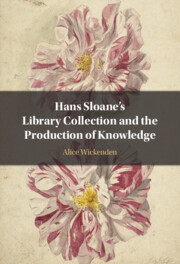Book contents
- Hans Sloane’s Library Collection and the Production of Knowledge
- Hans Sloane’s Library Collection and the Production of Knowledge
- Copyright page
- Contents
- Illustrations
- Tables
- Acknowledgements
- Introduction
- Chapter 1 Hans Sloane’s Library
- Chapter 2 Plants and/as Books
- Chapter 3 Repeating Books
- Chapter 4 Unreadable Books
- Chapter 5 Image Books
- Conclusion
- Appendices
- Bibliography
- Index
Chapter 2 - Plants and/as Books
Horti sicci and Print
Published online by Cambridge University Press: 20 November 2025
- Hans Sloane’s Library Collection and the Production of Knowledge
- Hans Sloane’s Library Collection and the Production of Knowledge
- Copyright page
- Contents
- Illustrations
- Tables
- Acknowledgements
- Introduction
- Chapter 1 Hans Sloane’s Library
- Chapter 2 Plants and/as Books
- Chapter 3 Repeating Books
- Chapter 4 Unreadable Books
- Chapter 5 Image Books
- Conclusion
- Appendices
- Bibliography
- Index
Summary
This chapter examines horti sicci, bound volumes of dried plant specimens, which caused difficulty upon their accession to the British Museum as they raised the question of how important it is for a library object to look and be bound like a book: Do collections of dried plants in folio codices belong in a library? Is a book simply a bound item, with a cover, with a spine? The chapter explores Sloane’s presentation and storage of his botanical collections within the library space and argues that the need to visually reproduce plants in printed books led to a triangulation of shared material: the original specimen, the engraved reproduction, and the attempt to identify or describe through language. It ends with a detailed discussion of plant names in John Milton’s Paradise Lost, showing how the library space can be extended metaphorically to support literary analysis.
Keywords
Information
- Type
- Chapter
- Information
- Publisher: Cambridge University PressPrint publication year: 2025
